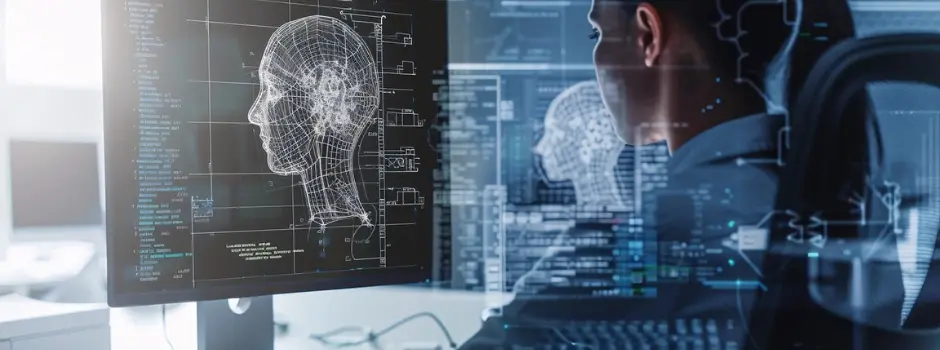
Top Computer Vision Projects for Beginners in 2024
Oct 22, 2024 7 Min Read 6432 Views
(Last Updated)
Venturing into 2024, the realm of artificial intelligence sees computer vision projects as pivotal accelerators for innovation.
This discipline, under AI, leverages convolutional neural networks, augmented reality, and deep learning to transform how machines interpret and understand visual data.
As you embark on your AI journey, you’ll learn about the power of computer vision to navigate through tasks like face recognition, and optical character recognition, and employing OpenCV techniques, setting a foundational stone in both your technical prowess and computer vision project portfolio.
Each computer vision project in this article is designed to challenge and refine your technical skills, offering a hands-on approach to mastering areas such as augmented reality applications and convolutional neural networks.
Table of contents
- Top 9 Computer Vision Projects For Your Portfolio
- Face Detection and Recognition
- Object Tracking and Classification
- Handwriting and Digit Recognition
- Automated Color Detection
- Gesture Recognition for Human-Computer Interaction
- Real-time Pedestrian Detector
- Image Colorization Tool
- Traffic Sign Classification
- Cartoonize an Image
- Takeaways...
- FAQs
- How do I start a computer vision project?
- What is an example of a computer vision project?
- How is AI used in computer vision?
- Where is computer vision used today?
Top 9 Computer Vision Projects For Your Portfolio
Let us now discuss our pick of the 9 best computer vision projects that beginners can learn about and build with ease, as well as how you can go about building them:
1. Face Detection and Recognition
1.1) Introduction to Face Detection and Recognition
Face detection and recognition technologies are quintessential computer vision projects that form the cornerstone of many advanced applications.
Using Python and OpenCV, beginners can embark on creating systems that not only detect but also recognize human faces with impressive accuracy.
This computer vision project involves several phases, from detecting faces in images to training a model that can recognize these faces in real-time scenarios.
1.2) Key Phases in Developing a Face Recognition System
- Face Detection
- Utilize Haar Cascade classifiers to detect faces within images.
- Implement OpenCV’s pre-trained classifiers for efficient face detection.
- Data Gathering
- Collect and store images of faces, converting them to grayscale to simplify the data handling.
- Use ‘haarcascade_frontalface_default.xml’ for accurate face detection.
- Training the Recognizer
- Process the gathered data using Local Binary Patterns Histograms (LBPH) to train the face recognizer.
- Store the training results in a ‘.yml’ file for later use in recognition tasks.
- Face Recognition
- Deploy the trained recognizer to identify faces from new images or video streams.
- Enhance the system’s reliability by improving its ability to predict with higher confidence.
1.3) Implementing the Project
- Start by setting up your environment with OpenCV and Python, ensuring all dependencies are correctly installed.
- Test your setup using a basic script to capture video streams and detect faces in real time.
- Gradually integrate more complex features like real-time recognition and data handling.
This computer vision project not only introduces you to the fundamentals of computer vision but also paves the way for more complex applications involving facial recognition technologies.
Would you like to master Computer Vision, Machine Learning as well as Artificial Intelligence and build an impressive portfolio of projects? Then GUVI’s IIT-M Pravartak Certified Artificial Intelligence and Machine Learning Course is the perfect choice for you, taught by industry experts, this course equips you with everything you need to know along with extensive placement assistance!
2. Object Tracking and Classification
2.1) Introduction to Object Tracking and Classification
Object tracking and classification are fundamental aspects of computer vision that enable machines to identify and follow objects across a series of frames.
This capability is crucial in various applications, from security surveillance systems to traffic management and interactive gaming.
For beginners, diving into computer vision projects like the Flower Recognition Model, Real-Time Object Detection System, and Vehicle Counting Model provides a practical foundation for handling real-world scenarios.
2.2) Key Projects Overview
- Flower Recognition Model
- Ideal for understanding classification algorithms.
- Utilizes convolutional neural networks to differentiate between species.
- Real-Time Object Detection System
- Focuses on detecting objects in live video feeds.
- Employs deep learning frameworks like TensorFlow or PyTorch.
- Monkey, Cat, and Dog Detection System
- Enhances skills in more specific classification tasks.
- Uses augmented reality to improve interaction and accuracy.
- Shape Detection Model
- Introduces geometric feature extraction.
- Important for applications in augmented reality and robotics.
- Train Your Own Object Detection Model
- Offers hands-on experience with dataset creation and model training.
- Involves real-time object detection to test the model’s efficiency.
- Vehicle Counting Model
- Applied in traffic management systems.
- Combines object tracking with convolutional neural networks for accurate counts.
- Furniture Recognition Model
- Useful in interior design and retail applications.
- Leverages optical character recognition for tagging and cataloging items.
2.3) Implementing Your First Computer Vision Project
To start, choose a computer vision project that aligns with your interests and available resources. For instance, the Flower Recognition Model requires fewer computational resources and provides a gentle introduction to neural networks.
Set up your environment with the necessary libraries and frameworks, such as OpenCV for image processing and TensorFlow or PyTorch for machine learning components.
- Begin by exploring pre-existing datasets or create your own to train your models.
- Progress to fine-tuning your model’s parameters to improve accuracy and reduce overfitting.
- Implement real-time testing to understand how your model performs under different conditions.
Engaging with these computer vision projects not only builds your technical skills but also enhances your problem-solving capabilities in real-world scenarios involving object tracking and classification.
Know About Real-life Projects for Developers and Computer Science Students [Source Code] 2024
3. Handwriting and Digit Recognition
3.1) Understanding Handwriting and Digit Recognition
Handwriting and digit recognition are pivotal computer vision projects that allow machines to interpret handwritten text and numbers.
This computer vision project is not only fundamental for learning optical character recognition but also enhances your skills in several technical areas.
3.2) Key Components of the Computer Vision Project
- Machine Learning Fundamentals
- Learn the basics of algorithms and how they can be applied to recognize patterns in handwriting.
- Image Processing Techniques
- Utilize OpenCV to preprocess images, making them suitable for recognition tasks.
- Neural Networks for Image Recognition
- Employ convolutional neural networks (CNNs) to improve the accuracy of handwriting recognition.
- Training and Evaluating Models
- Use libraries like Keras and TensorFlow to train models on datasets such as MNIST and evaluate their performance.
- Developing Practical Applications
- Implement these models into real-world applications, such as reading postal codes from envelopes or extracting text from scanned documents.
3.3) Implementation Steps
- Start by setting up your Python environment and installing necessary libraries like TensorFlow, Keras, and OpenCV.
- Explore the MNIST dataset to understand the variety of handwriting styles.
- Train a simple neural network to recognize these digits, achieving high accuracy.
- Develop the model into an application using frameworks like Streamlit or create a GUI with Tkinter for interactive user engagement.
This computer vision project not only sharpens your programming skills but also deepens your understanding of how computer vision can be applied to solve everyday problems through digit and handwriting recognition.
Must Find Out Top 9 Android Project Ideas to Kickstart Your Android Journey
4. Automated Color Detection
4.1) Introduction to Automated Color Detection
Automated color detection is a fascinating computer vision project that involves identifying and classifying colors in images.
This computer vision project is highly technical and leverages Python libraries such as OpenCV, Pandas, and Numpy to create applications that can detect and recognize colors accurately.
4.2) Key Projects and Technologies
- V7 Platform
- Offers comprehensive tools like Auto Annotation and Dataset Management.
- Supports industries ranging from Healthcare to Agriculture, enhancing various applications with advanced color detection capabilities.
- Deepgaze by mpatacchiola
- Focuses on human-computer interaction features.
- Includes color detection functionalities to improve user interface experiences.
- Color Recognition by ahmetozlu
- Utilizes the K-Nearest Neighbors (KNN) algorithm trained with color histogram features.
- Capable of recognizing colors in various environments, including webcam streams and single images.
- Better Color Detection for OpenCV by hocop
- Simplifies the color detection process using multiple ranges.
- Automatically adjusts to identify colors more accurately in complex visual scenes.
4.3) Implementing Automated Color Detection
- Begin by setting up your Python environment and installing necessary libraries like OpenCV, Pandas, and numpy.
- Explore different color spaces and understand how to manipulate image data to isolate colors.
- Implement KNN for color classification and test your model on different datasets to ensure robustness.
- Consider integrating your color detection model into a larger application, such as vehicle color recognition or digital media analysis.
This computer vision project not only enhances your technical skills in computer vision but also opens up numerous possibilities for practical applications in various industries.
Also Read: 8 Top Full Stack Web Developer Coding Projects For You!
5. Gesture Recognition for Human-Computer Interaction
5.1) Exploring Gesture Recognition for Enhanced Human-Computer Interaction
Gesture recognition technology stands as a transformative approach to human-computer interaction, particularly beneficial for individuals with speech impairments.
This segment delves into various computer vision projects and models that leverage advanced computer vision techniques, including convolutional neural networks (CNNs), to facilitate intuitive and efficient user interactions.
5.2) Key Projects and Implementations
- Deepgaze by mpatacchiola
- Focus: Enhances HCI with features like head pose estimation, gaze direction, and motion tracking.
- Technology: Utilizes CNNs for critical functions such as gaze direction estimation and skin detection.
- Real-Time Gesture Recognition Repository by ahmetgunduz
- Platform: Python-based utilizing PyTorch for gesture recognition across diverse datasets.
- Updates: Continuously refined, with the latest update on December 29, 2022.
- Popularity: Recognized by the community with 600 stars on GitHub.
- Hand Pose and Shape Estimation Dataset by lmb-freiburg
- Focus: Provides data for developing models that estimate hand pose from single color images.
- Utility: Essential for training robust gesture recognition systems.
- Language: Python, with the repository last updated on January 21, 2022.
5.3) Advanced Gesture Recognition System
- System Overview: Incorporates six stages from hand detection to developing a gesture-controlled virtual interface.
- Performance: Achieves real-time interaction speeds with an average of 25 frames per second, suitable for dynamic applications.
- Model Efficiency: Utilizes the Inception-V1 model, which outperforms others in accuracy and reliability for gesture recognition.
5.4) Practical Applications and Impact
- Desktop Interaction: Allows control over applications like VLC and file management through customized gestures.
- Accessibility: Offers significant benefits for physically disabled individuals, enhancing their ability to interact with technology without physical contact.
This exploration into gesture recognition not only highlights the technical advancements but also underscores the practical applications that significantly enhance user experience in human-computer interactions.
Must Read: Human-Computer Interaction in UI/UX: A Comprehensive Guide on Effective Designing [2024]
6. Real-time Pedestrian Detector
6.1) Utilizing YOLOv4-tiny for Efficient Pedestrian Detection
The Real-time Pedestrian Detector project capitalizes on the YOLOv4-tiny model, renowned for its optimal balance between detection speed and accuracy.
This model outshines alternatives like YOLOv3 and MobileNetSSD by providing faster performance without significantly compromising the accuracy essential for real-time applications.
6.2) Key Implementation Steps
- Model Setup:
- Load the YOLOv4-tiny model using OpenCV’s DNN module to handle pedestrian detection tasks.
- Initialize the video feed through OpenCV’s VideoCapture.
- Detection Process:
- Implement the
pedestrian_detectionfunction to analyze video frames, returning data such as bounding box coordinates and confidence scores. - Apply Non-maximum Suppression (NMS) to refine the detection by eliminating redundant and overlapping bounding boxes.
- Implement the
- Output Display:
- Process video frames continuously in a loop, resizing and feeding them to the detection function.
- Draw bounding boxes around detected pedestrians and display the enhanced video feed in real-time.
6.3) Integration and Testing
- Test the system rigorously to ensure it performs efficiently in different environmental conditions.
- Consider integrating this model into broader safety systems or urban surveillance networks to enhance pedestrian safety and city monitoring.
This computer vision project not only serves as a practical application of advanced computer vision techniques but also provides a robust framework for developers looking to delve into real-time object detection.
Also Find Out the 10 Best React Project Ideas for Developers [with Source Code]
7. Image Colorization Tool
7.1) Introduction to Image Colorization
Image colorization breathes life into monochrome images, whether they are historical photographs or AI-generated visuals. This process utilizes advanced AI technologies to add realistic colors to black-and-white images, enhancing their visual appeal and historical value.
7.2) Key Technologies and Tools
- Photoshop’s Colorize Neural Filter
- Offers easy-to-use presets for quick colorization.
- Ideal for beginners to experiment with different color schemes.
- MyHeritage’s AI De-Oldify
- Provides accurate colorization, integrating seamlessly with genealogical tools.
- Useful for restoring old family photos with realistic colors.
- Palette FM
- A top choice for free and quick colorization.
- Offers a base palette and diverse presets, allowing for creative color applications without altering the image content.
7.3) Practical Applications
- Historical Photo Restoration: Reviving historical photographs to preserve and present historical truths in a more engaging way.
- Artistic Projects: Artists and designers can utilize these tools to create stunning visual effects in artworks and design projects.
7.4) Getting Started
For beginners interested in exploring image colorization, starting with Photoshop’s colorized neural filter provides a user-friendly introduction. Once comfortable, users can advance to more sophisticated tools like MyHeritage and Palette FM to explore broader possibilities in image enhancement.
7.5) GitHub Repositories for Learning and Experimentation
- Automatic Image Colorization: Repositories like DeOldify by Jason Antic and Palette.fm by Emil Wallner offer codebases for those interested in the technical backend of colorization AI.
- User-Guided Image Colorization: This category allows users to influence the colorization results using methods such as scribbles, reference images, or text-based inputs.
Exploring these repositories can provide deeper insights into the methodologies and algorithms driving the automated colorization of images, making it a valuable learning experience for anyone interested in computer vision and AI applications in digital media.
Also Read: Top 30 Creative Website Ideas For 2024
8. Traffic Sign Classification
8.1) Overview of Traffic Sign Classification System
The Traffic Sign Classification project employs advanced deep learning techniques, specifically convolutional neural networks (CNNs), to enhance road safety and automation. This system utilizes two robust models: MobileNet architecture and YOLO V5, each tailored for specific aspects of traffic sign recognition.
8.2) Model Specifications and Performance
- MobileNet Architecture:
- Training Accuracy: 97%
- Validation Accuracy: 98%
- Function: Classifies traffic signs from static images.
- Dataset: 4,170 images across 58 traffic sign classes.
- YOLO V5 Model:
- Capabilities: Real-time traffic sign recognition.
- Application: Operates using a web camera for dynamic detection.
- Dataset: Training with 1,392 images, testing on 173 images, and validation with another 173 images, covering 39 traffic sign classes.
8.3) System Enhancements and Capabilities
- Accuracy Improvement: The system significantly boosts accuracy rates, ensuring reliable sign recognition.
- Class Coverage: Expands the range of recognizable traffic signs, enhancing the system’s applicability.
- Real-Time Detection: Integrates real-time capabilities to function effectively in dynamic driving environments.
8.4) Technical Requirements and Resources
- Hardware: Requires a web camera for real-time functionalities.
- Software: Python 3.10.9, with essential libraries for deep learning and image processing.
- GitHub Resources: Extensive repositories provide community support and additional tools for traffic sign classification, including applications in self-driving cars and augmented reality.
This computer vision project not only serves as a practical tool for enhancing vehicular automation but also as a learning platform for those interested in the intersection of AI and automotive technology.
Also Explore: 7 Exciting Project Ideas Using Large Language Models (LLMs)
9. Cartoonize an Image
9.1) Adobe Illustrator Method
- Setup: Initiate by opening Adobe Illustrator and creating a new file with dimensions of 18×18 inches at 300 resolution in CMYK mode.
- Preparation: Import the desired image, adjust its size and opacity, and create a new layer specifically for drawing the cartoon outline.
- Drawing: Utilize a digital art tablet with the ‘Pressure’ option enabled in Brush settings for dynamic line thickness. Draw the outline and fill in the black areas using the Pencil Tool.
- Finalizing Lines: Select ‘Expand appearance’ and ‘merge paths’ to unify lines, ensuring a cohesive look.
- Colorization: Employ Tea World skin tones or select colors from the Swatches panel to colorize the image. Isolate the group to modify the colors of individual parts like lips and eyes.
- Shading: Add shadows and highlights with two tones, using a shadow chart for accurate reference.
- Layer Management: Organize layers from dark to light to simplify adjustments and enhancements.
9.2) Canva’s Cartoonify App
- Usage: Open Canva, select the Cartoonify app, and choose a photo to apply the cartoon effect.
- Adjustments: Modify the intensity of the cartoon effect, change the background, or add elements like speech bubbles.
- Export: Download and share the cartoon directly from Canva, allowing for easy distribution and sharing.
9.3) Advanced Tools and Techniques
- Photoshop Approach: In Adobe Photoshop, convert the image to a Smart Object for non-destructive edits and apply the Poster Edges effect. Adjust Edge Thickness and Intensity for desired cartoon effects.
- AI Integration: Use image-to-cartoon.com for AI-driven transformations, providing a user-friendly interface for quick results.
- Midjourney AI: Upload an image to Midjourney, customize your prompt, and utilize AI to generate a cartoon version. Experiment with different prompts to achieve the best outcome.
Must Explore 14 Best AI Image Generator Tools
This section not only explores traditional methods like Adobe Illustrator but also introduces modern AI tools, providing a comprehensive guide to cartooning images effectively.
Takeaways…
From facial and object recognition to more specialized applications like automated color detection and gesture recognition for human-computer interaction, each computer vision project has been carefully selected to challenge and expand the technical capabilities of enthusiasts at the beginning of their journey in artificial intelligence.
These computer vision projects not only underline the technical complexity and potential of computer vision but also provide a practical foundation for applying these cutting-edge techniques in real-world scenarios, demonstrating the transformative impact of AI across diverse sectors.
As we conclude, it’s imperative to recognize the significance of continuous learning and experimentation within the dynamic field of computer vision.
Must Read About How to Make Amazing Projects for Internships and Placements? [2024]
FAQs
How do I start a computer vision project?
To start a computer vision project, begin by defining your project goals, gathering necessary data, selecting appropriate algorithms, and implementing and testing your solution. The article above will tell you everything you need to know.
What is an example of a computer vision project?
An example of a computer vision project is developing a system to detect and recognize objects in images or videos, such as identifying pedestrians in autonomous vehicles, just like the project we discussed in this article.
How is AI used in computer vision?
AI is used in computer vision to train algorithms to recognize patterns and make decisions based on visual data, enabling tasks like object detection, image classification, and facial recognition.
Where is computer vision used today?
Computer vision is used in various industries today, including healthcare for medical imaging, retail for inventory management and customer analytics, and security for surveillance and facial recognition systems.
























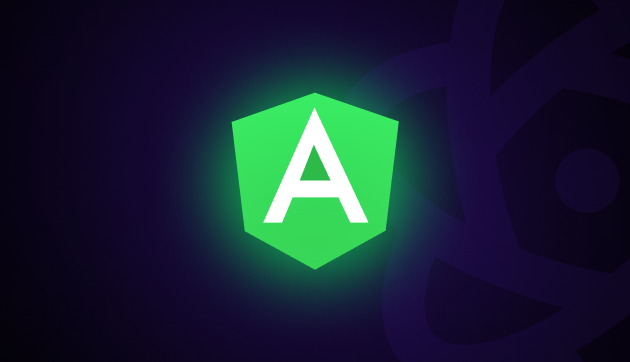
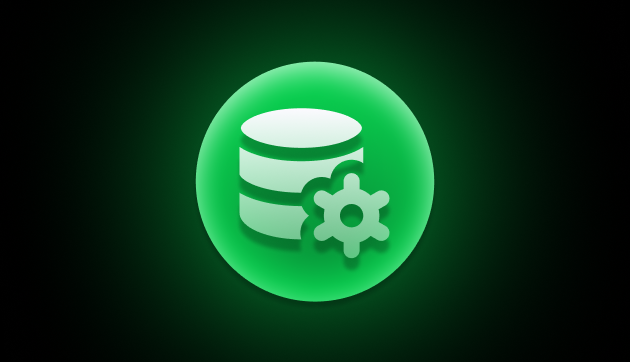

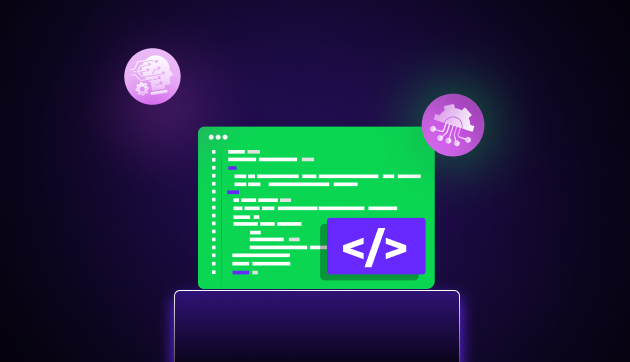

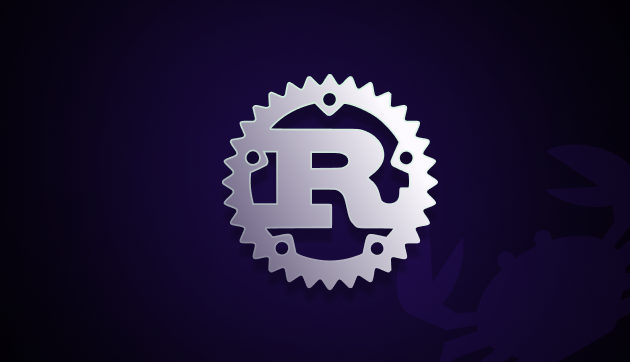
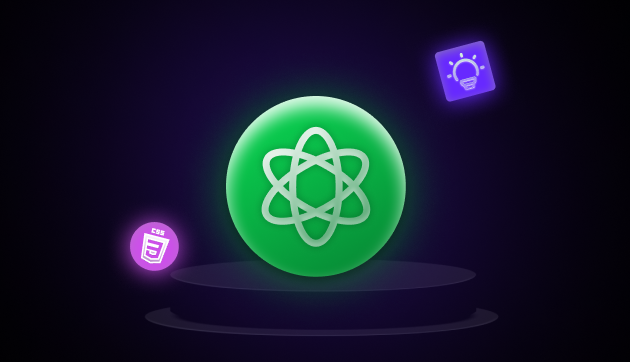

Did you enjoy this article?